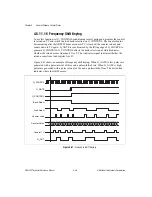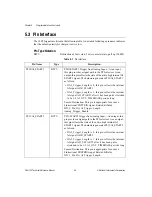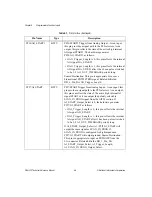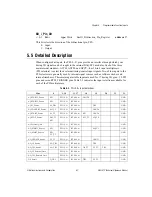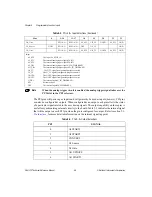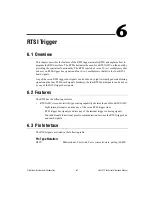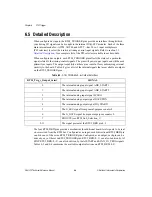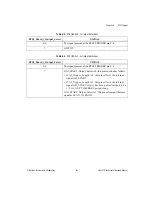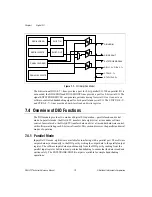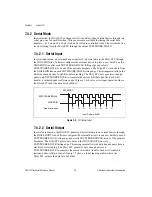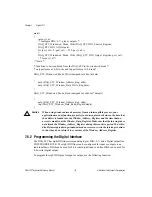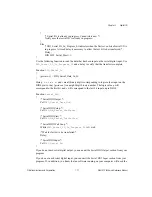
Chapter 6
RTSI Trigger
DAQ-STC Technical Reference Manual
6-4
©
National Instruments Corporation
RTSI_Board_
i_Output_Select
i = 0
bits: <0..2>
type: Write
in: RTSI_Board_Register
address: 81
i = 1
bits: <3..5>
type: Write
in: RTSI_Board_Register
address: 81
i = 2
bits: <6..8>
type: Write
in: RTSI_Board_Register
address: 81
i = 3
bits: <9..11>
type: Write
in: RTSI_Board_Register
address: 81
This bitfield selects the signal appearing on the RTSI_BRDi pin, if the pin is configured for
output:
0–6: RTSI_TRIGGER<0..6>.
7: If i = 0–1, output the analog input STOP signal.
If i = 2–3, output the same signal that is selected to be output on the PFI7/AI_START
pin.
Related bitfields: RTSI_Board_i_Pin_Dir, AI_START_Output_Select.
RTSI_Board_
i_Pin_Dir
i = 0
bit: 12
type: Write
in: RTSI_Board_Register
address: 81
i = 1
bit: 13
type: Write
in: RTSI_Board_Register
address: 81
i = 2
bit: 14
type: Write
in: RTSI_Board_Register
address: 81
i = 3
bit: 15
type: Write
in: RTSI_Board_Register
address: 81
This bit selects the direction of the bidirectional pin RTSI_BRDi:
0: Input.
1: Output.
RTSI_Clock_Mode
bits: <0..1>
type: Write
in: RTSI_Trig_Direction_Register
address: 58
This bitfield selects the internal timebase by specifying the way the OSC and the RTSI_OSC
pins are used:
0: The signal from the OSC pin will be used as the internal timebase. The RTSI_OSC
pin will not be configured for input (it will be in the pull-up high-impedance state).
1: The signal from the OSC pin will be used as internal timebase. The RTSI_OSC pin
will be configured for output; it will propagate the signal coming from the OSC pin.
In this mode, the signal from the OSC pin is used as the internal timebase directly;
in other words, not after passing through the RTSI_OSC pin buffers.
2: Slave clock. The signal from the OSC pin will be ignored. The RTSI_OSC pin will
be configured for input. The signal from the RTSI_OSC pin will be used as the
internal timebase.
3: Master clock. The signal from the OSC pin will be used as the internal timebase.
The RTSI_OSC pin will be configured for output; it will propagate the signal
coming from the OSC pin. The signal from the OSC pin will pass through two
buffers provided for use with the RTSI_OSC pin before becoming the internal
timebase; this design provides the best master/slave clock synchronization.

